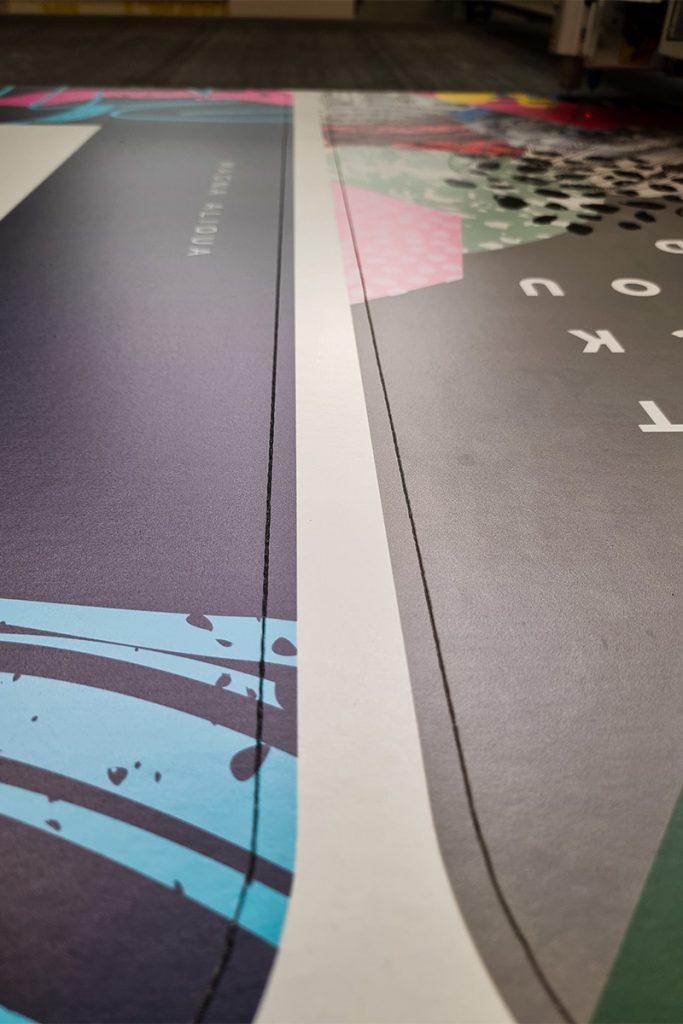Xanita board is designed to be cut with digital CNC cutters, such as Zund or Kongsberg. CNC cutters should not be confused with CNC routers. The two primary tools a cutter requires are an oscillating tool – preferably electric as opposed to pneumatic, and a V-cut tool. These two tools will allow you to work successfully with Xanita board.
Supplementary tools that can be used as well are the pen tool, for labeling parts and panels, the drag knife for quick straight cuts and laser tool for surface etching.



Types of cuts
V-cut
The v-cut is critical when it comes to structural applications. Most commonly the v-cut is used to create a 90 degree fold, which allows designers to create things like flat-pack point of sale units or exhibition stand walls that can be easily joined together.
A well executed v-cut adds to the premium look and feel of a finished design and helps ensure good structural integrity.
Double v-cut
The double v-cut is most commonly used as a return to hide the exposed core of Xanita board. This is done to give a unit, display or stand a more premium look and feel. The doubling up of material created as a result of the double-v also creates extra strength and rigidity. Double v-cut returns are often used for shelves on on point-of-sale units that need to hold a lot of weight.
Shape cut
This is one of the fundamental cuts. Along with v-cutting, shape cuts will make up the vast majority of the cuts you make.
Any time you are using your oscillating tool, you are essentially making a shape cut. The difference between a surface cut and a kiss cut is that a shape cut is a cut where the blade penetrates completely through the board.
Surface cut
A surface cut is where you are only cutting through the top liner and leaving the core and bottom liner intact.The reason why we do this is because one of the unique aspects of Xanita board is being able to remove the liner with a heat gun. This allows for a unique design aesthetic using the core as opposed to relying solely on printing.
If you do not have a pen tool, the surface cut can also be used to label panels in the same way the pen tool would.
Kiss cut
The kiss cut is a cut that doesn’t go all the way through the board, the cut stops at the bottom liner. This is useful for creating clean premium finishes, hiding elements like shelf tabs. It is a very simple and effective way to take finishing to a more premium level.
There is a manual labour element required to complete the kiss cut. The top liner and core that have been cut need to be “weeded” out manually. This is easily done with a tool like a screwdriver, leaving only the bottom liner remaining.
Channel cut
This is one of the methods that can be used to create bends and curves with Xanita board. It is NOT as effective, clean or quick as removing the liner, which is our recommendation. Channel cuts are created by making a series of parallel cuts using a drag knife. The cuts can be done either horizontally or vertically across the board.
*Our competitors are limited to this method to create curves.

